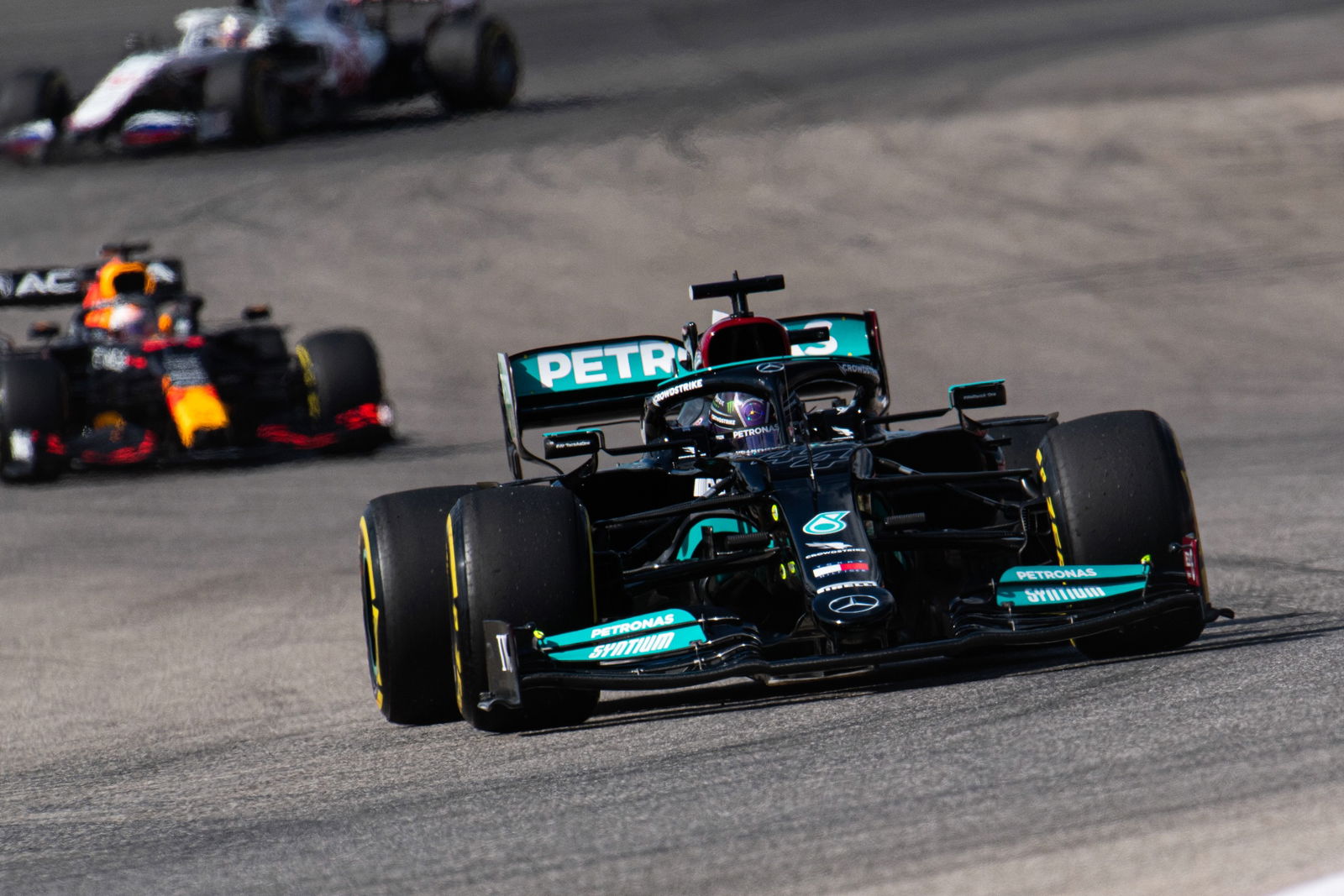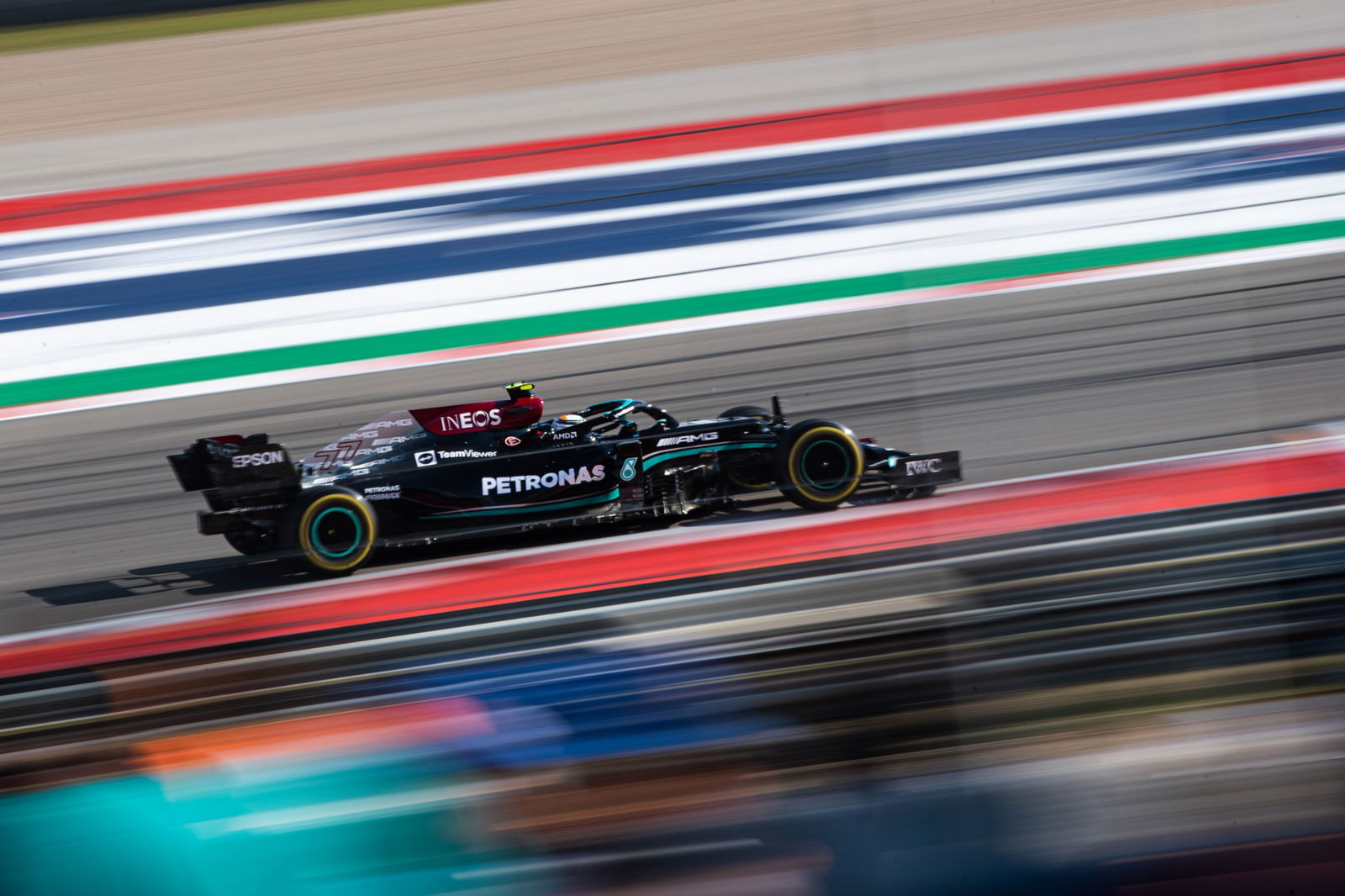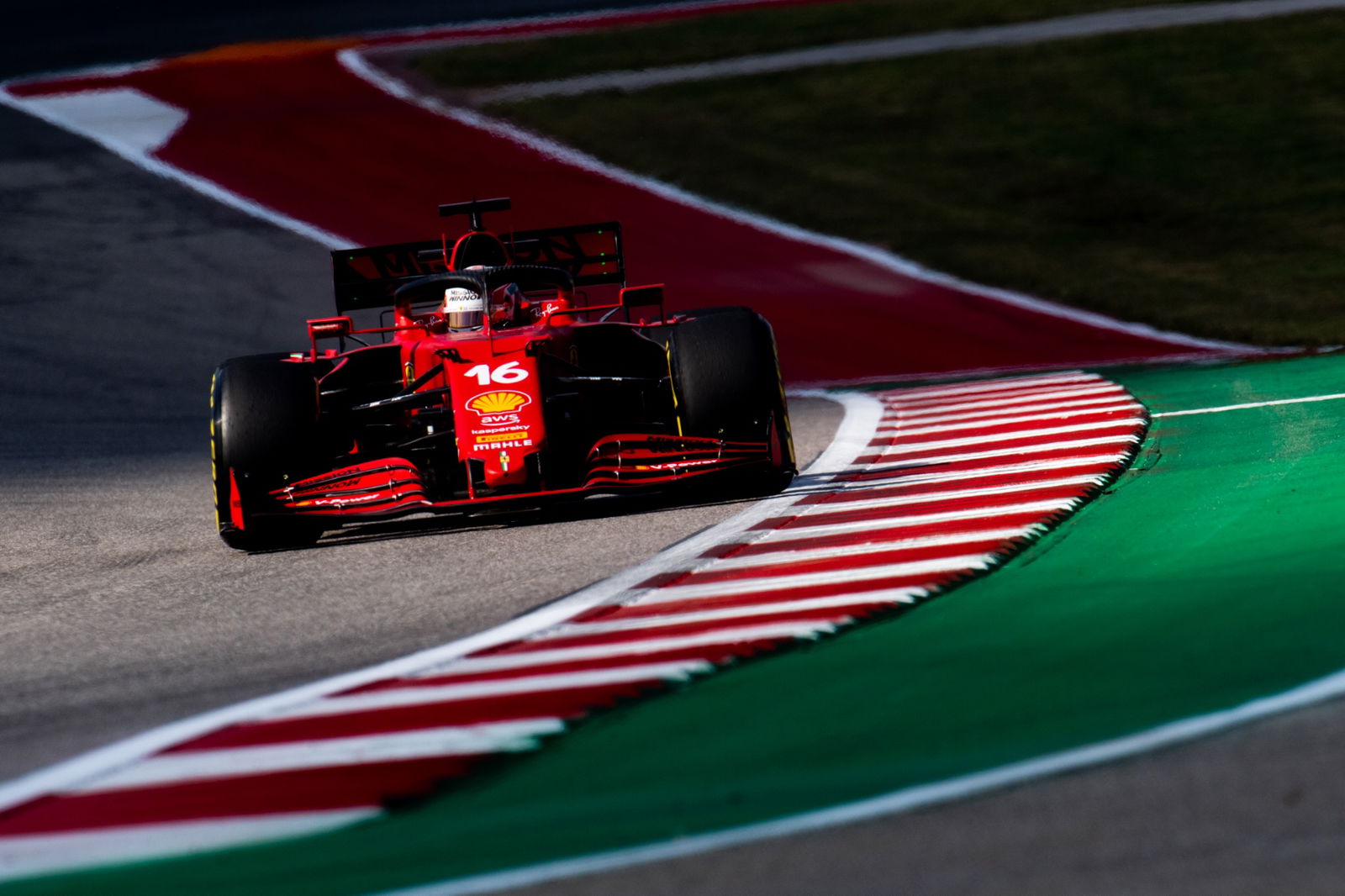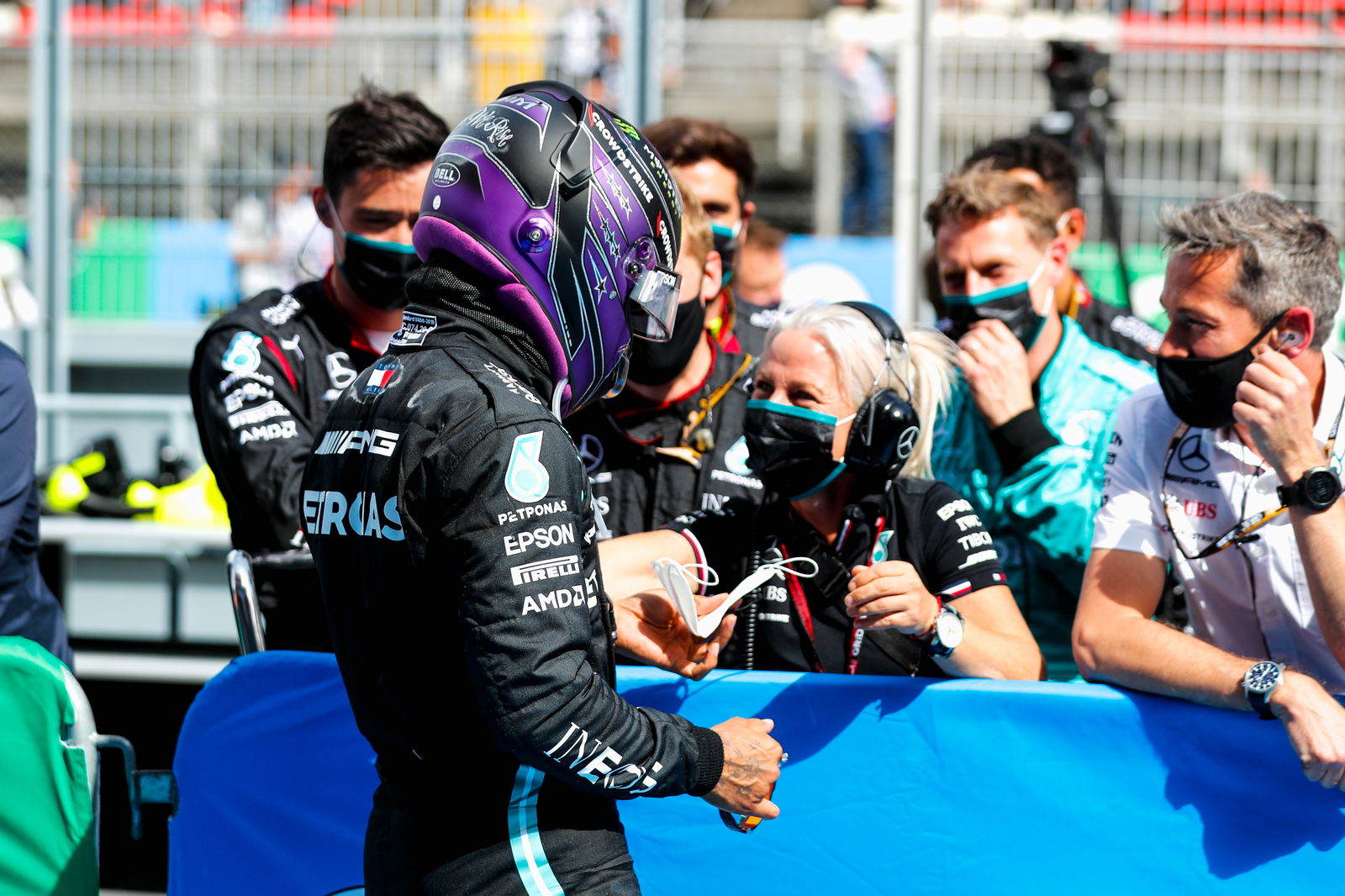What’s behind Mercedes’ recent F1 straightline speed gains?

The intrigue surrounding Mercedes’ enhanced straightline performance stepped up a gear at Formula 1’s United States Grand Prix, as talk of a possible suspension trick dominated Friday.
Red Bull first questioned Mercedes’ speed gains following a comprehensive defeat at the Turkish Grand Prix, with team principal Christian Horner expressing his “surprise” at what he described as being a “significant step” in performance.
Horner initially suggested the increase in pace had come following the introduction of a new power unit, even though engine specifications are locked in place this year due to homologation rules.
However in Austin a new theory emerged, with Red Bull suspecting that its rival Mercedes has a means of lowering the ride height of its car and stalling its diffuser in order to reduce drag and therefore boost top speed.
Footage from the race at Istanbul Park showed the rear of Valtteri Bottas’ W12 “dropping significantly” - as Horner put it - on the straights, before rising again under braking for corners.
During a conversation with Sky during FP1 on Friday, Horner claimed Mercedes are “obviously optimising a straightline device.”

Speaking later following the conclusion of both Friday practice sessions at COTA, Horner added the system “works well at some circuits” but is “perhaps not as useable at others”.
Asked whether it is possible for Red Bull to come up with a similar type of innovation this season, Horner replied: “We’ve got to focus on our strengths. It’s not something they’ve just introduced.”
But Mercedes boss Toto Wolff dismissed Red Bull’s suggestions as “noise”, insisting his team has no “silver bullet” on its car.
"I think we recognise absolutely that this is a sport where competitors will always try to find out whether there is some kind of silver bullet," Wolff said.
"My experience is there is no such thing, it’s all the small gains, marginal gains that have been added and bring performance.
"We’re trying to really comprehend our car better and add performance in lap time without listening too much to the noise.”
Instead, Wolff puts Mercedes’ strong straightline speed at recent events down to finding an aerodynamic “sweet spot” with its W12.

"I think what we have been able to understand is how to hit the sweet spot of the car, in terms of the set-up," he explained.
"When you look at the lap time, it’s a straightline gain, and I think we found the right compromise between drag and downforce.
"And on the other side, we were very quick through the very fast corners, which is good and equal to Red Bull on the slow corners. So overall, the car is much better together.”
According to Wolff, the set-up “sweet spot” is the result of gradual gains made by Mercedes as it better understands its package following the introduction of an aero update at the British Grand Prix in July.
“What I enjoy watching is the intellectual process in the team around how to hit the sweet spot,” Wolff said.
“Obviously we’ve introduced that upgrade in Silverstone and since then have comprehended every race a little bit better how to extract the maximum performance.
“Now since Sochi, then in Turkey, and also here, it proves to be definitely the right path."


